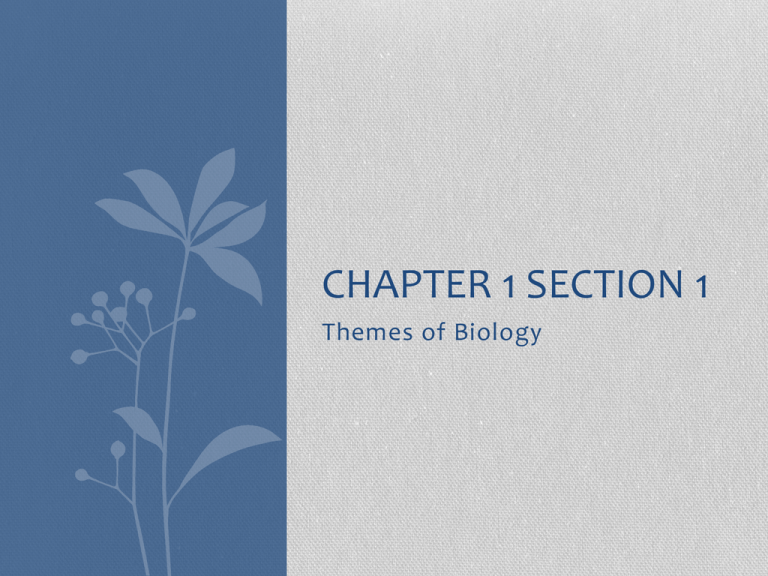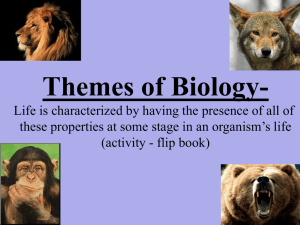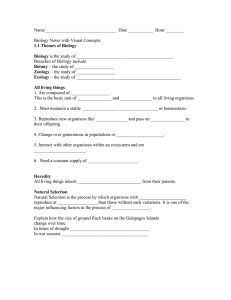CHAPTER 1 SECTION 1 Themes of Biology
advertisement

CHAPTER 1 SECTION 1 Themes of Biology Biology is the study of life. All living organisms share certain general properties that separate them from nonliving things. •Properties of Life: • Cellular organization • Reproduction • Metabolism • Homeostasis • Heredity • Responsiveness • Growth and development Characteristics of Living Organisms •Cellular organization – every living thing is composed of one or more cells. •Reproduction – all living things are able to reproduce. •Metabolism – all obtain and use energy to run the processes of life. •Homeostasis – living organisms maintain a consistent internal environment. Characteristics of Living Organisms • Heredity – living things pass traits to offspring. • Responsiveness – all living things respond and adjust to the environment. • Growth and Development – all living things grow and development. Throughout this year, we will discuss seven themes of biology that are based on the seven properties of life. We will learn about: •Cellular structure and function: •Cells are highly organized, tiny structures with thin coverings called membranes. All living things are made of one or more cells. A cell is the smallest unit capable of all life functions. We will learn about: •Reproduction: •Reproduction is the process by which organisms make more of their own kind from one generation to the next. We will learn about: •Metabolism: •Metabolism is the sum of all the chemical reactions carried out in an organism. Almost all energy used by living organisms is originally captured from sunlight. We will learn about: •Homeostasis: •Homeostasis is the maintenance of a stable internal conditions in spite of changes in the external environment. An organism unable to balance its internal conditions with its environmental conditions could become ill and die. We will learn about: •Heredity: •Heredity is the passing of traits from parent to offspring. The basic unit of heredity is called a gene. Genes are coded in a molecule called deoxyribonucleic acid (DNA). Genes determine an organism’s traits. A change in the DNA of a gene is called a mutation. Most mutations are harmful, but some can help an organism survive. We will learn about: •Evolution: •Evolution is defined as change in the inherited characteristics of species over generations. A species is a group of genetically similar organisms that can produce fertile offspring. Natural selection is the process in which organisms with favorable traits are more likely to survive and reproduce. We will learn about: •Interdependence: •The organisms in a biological community live and interact with other organisms. Ecology is the branch of biology that studies the interactions of organisms with one another and with the nonliving part of their environment. Organisms are dependent on each other and on their environment.




